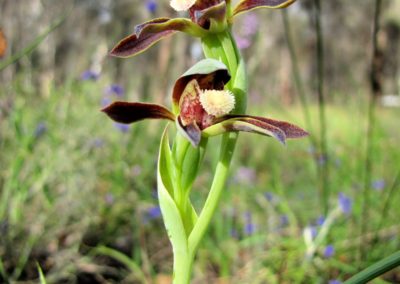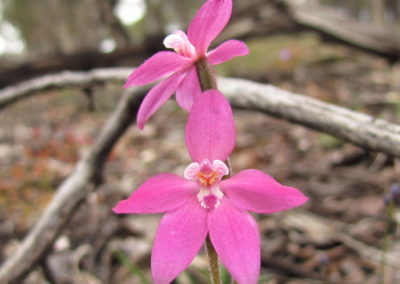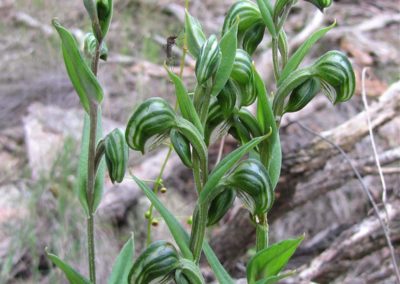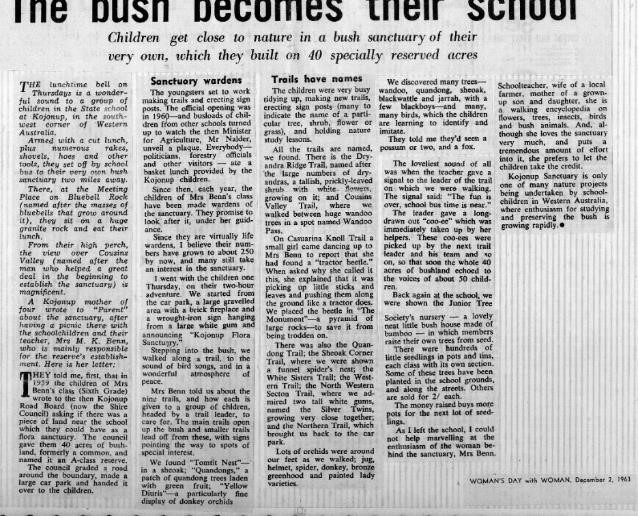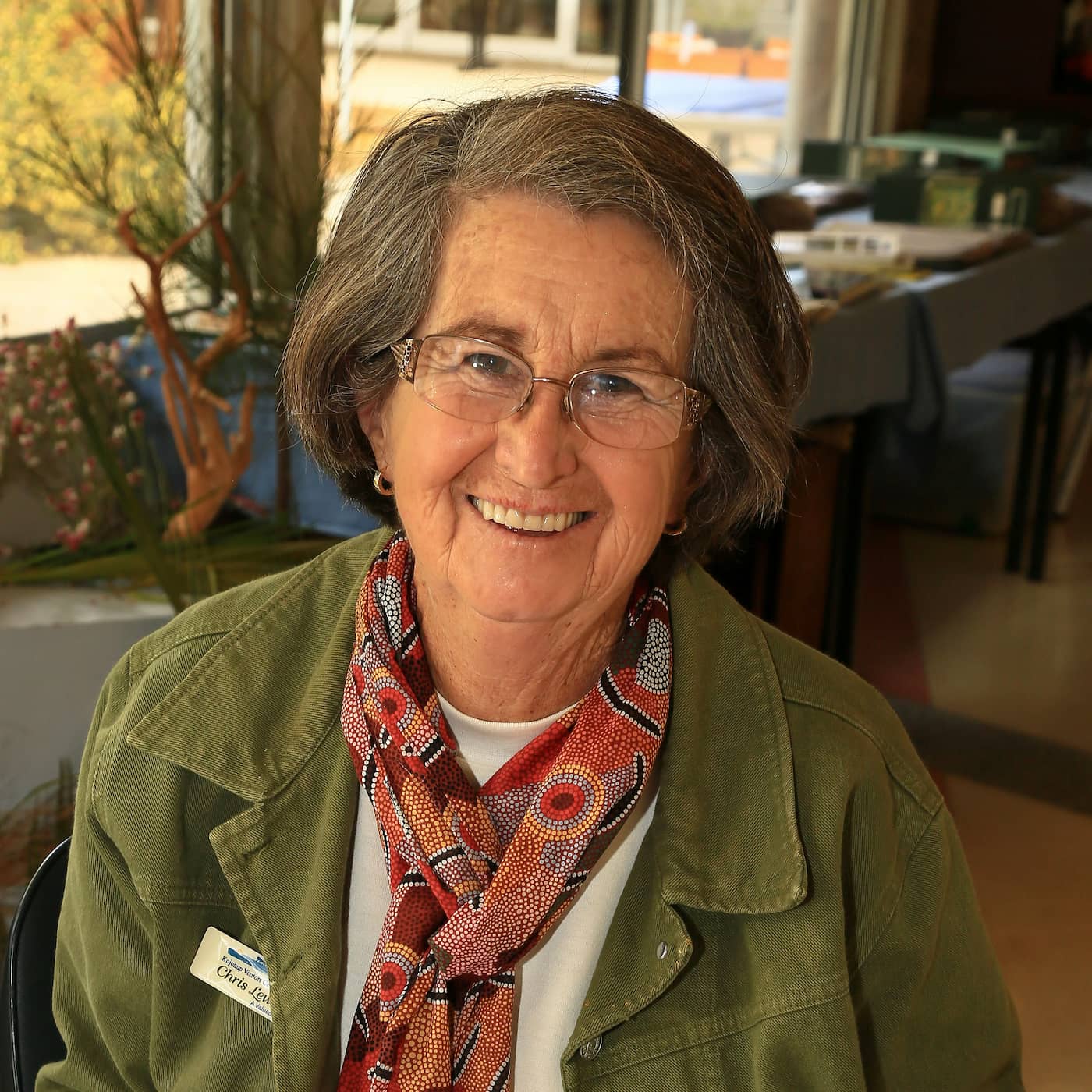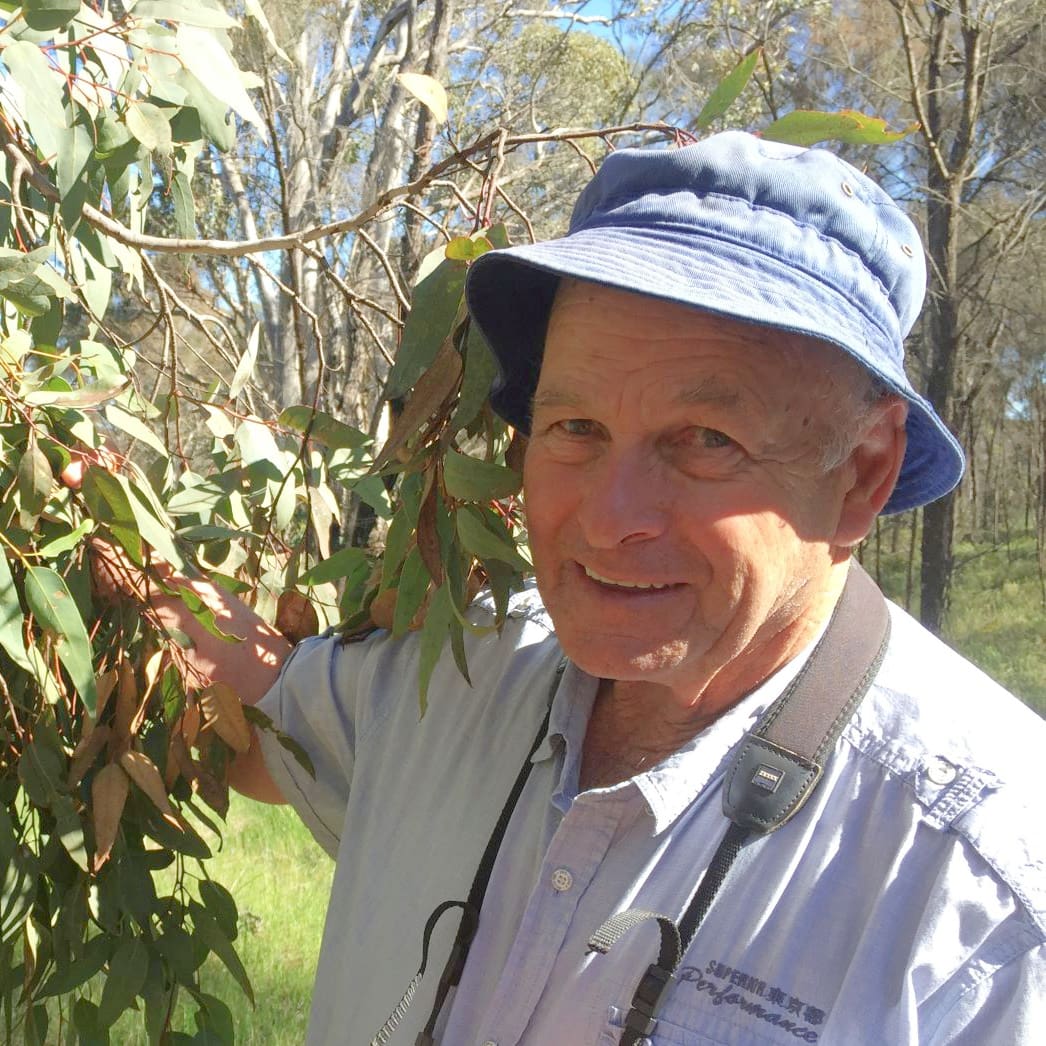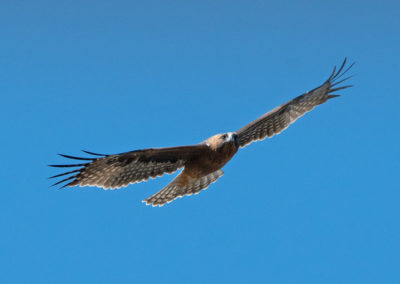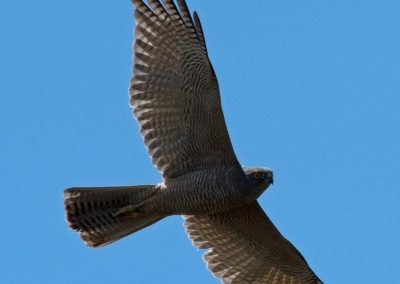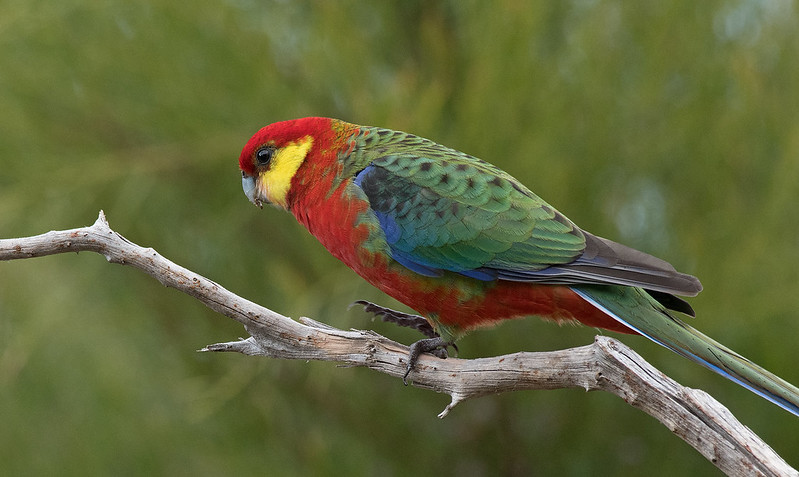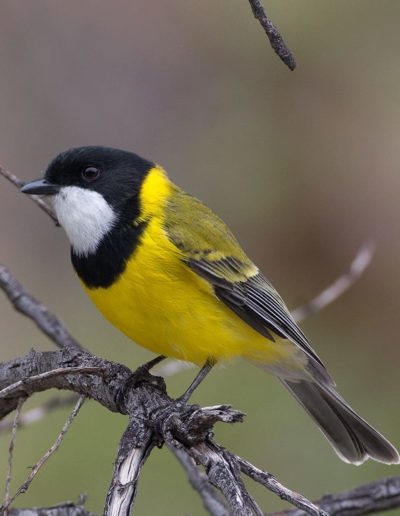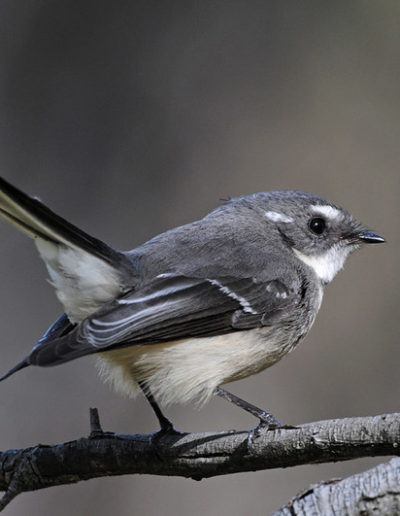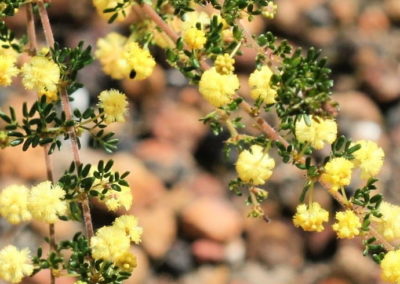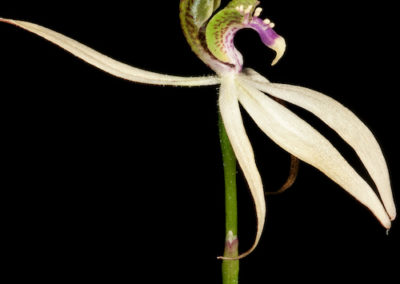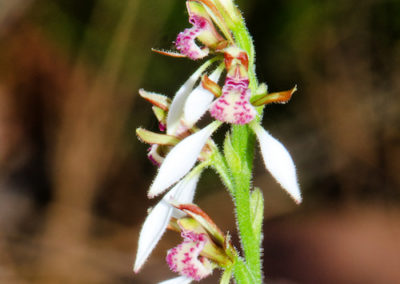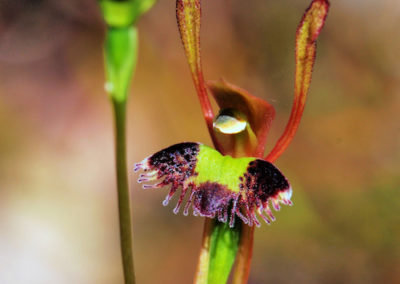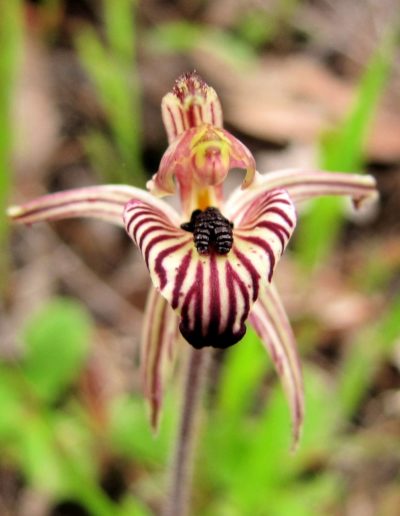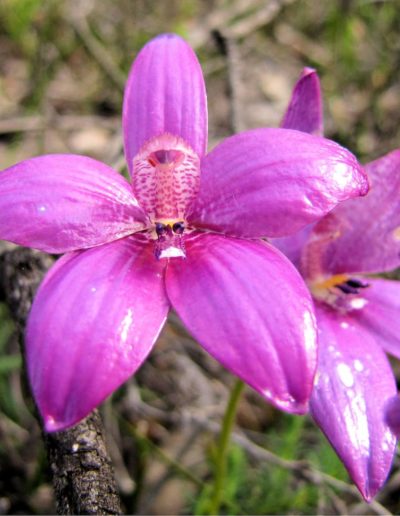-
Picnic Areas
-
Hiking
-
Mobile Reception (Telstra)
Overview
Myrtle Benn Flora and Fauna Sanctuary is proof of the importance of individual people in the protection of special places.
Across the Great Southern many passionate individuals have advocated for the protection of bushland – from large national parks, to small local reserves like this one.
Myrtle Benn was a teacher at the Kojonup Junior High School with a love of the bush and a keen awareness of how much of it was being cleared for farming.
In 1959 Mrs Benn’s Grade 7 students formed a Nature Club and asked the Shire of Kojonup to create a bush sanctuary that could be cared for by the class.
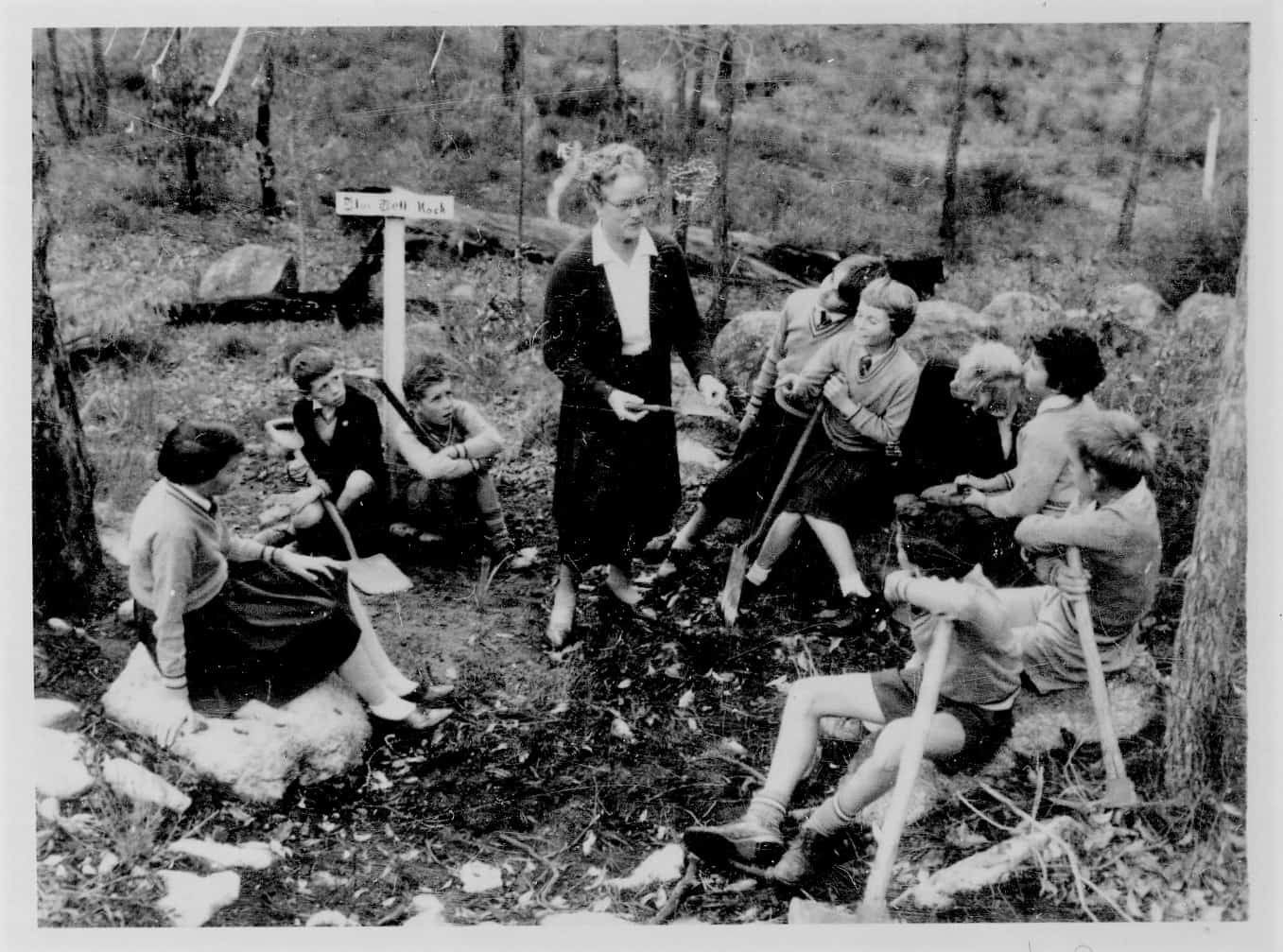
After the Shire agreed to set aside an area in the north-west corner of the town precinct, Mrs Benn created an outdoor classroom for her students between 1960 and her retirement in 1972.
Two of the original walking trails built and maintained by Mrs Benn and her students remain – now well sign-posted to guide you through the Wandoo, Marri and Sheoak woodland.
In spring the reserve bursts into colour with many species of wildflowers, including a stunning variety of orchids.
Pink enamel orchid (Elythranthera emarginata)
Pink enamel orchid (Elythranthera emarginata). Image: Sue O’Halloran
Banded greenhood orchid (Pterostylis vittata)
Banded greenhood orchid (Pterostylis vittata). Image: Sue O’Halloran
Story of the place
Noongar Boodja
There are signs of the long habitation of this country by Noongar people, including scar trees with shield cutouts and a kodj tree (which have notches cut into the trunk with a kodj, a type of axe, so men could climb in search of bush foods like possums). The Kodj Gallery, in Kojonup’s Kodja Place Visitor Centre, has a kodj and a photo of a kodj tree on display.
Mr Charlie Elverd, a respected local, had significant recollections from his childhood years about Wilgie Hill, which is located near the boundary of the Sanctuary. He recalled seeing a ‘corroboree’, which featured songs and dances, performed not far from the Kojonup Cemetery in about 1900. Before the performance the participants painted themselves with the wilgie, the red ochre that is found nearby.
An area of bush adjacent to the Sanctuary is vested with the Kojonup Aboriginal Corporation, continuing that connection between Noongar people and this place.
Noongar Elder, Granny Ettie Eades, shared her knowledge of Noongar names with Myrtle, who recorded them in hand-written notes. These names are now recorded on the signs identifying plants on the trails.

The Kodja Place & the Kojonup Visitor Centre
143 Albany Highway
(08) 9831 0500
Just a few km away is the award-winning Kodja Place. This interactive visitor centre tells the stories of the deep heritage of the Noongar people, and also the strength of will and self-reliance of the early pastoral families that opened up the land around this track that connected the water holes.
History of the Sanctuary
Myrtle Benn
Kojonup teacher
In a 1963 interview Myrtle recalled that on her daily bus trips from her farm to town, she observed “the gradual changes in the landscape and the disappearance of much of the local flora and fauna. If no reserves were established eventually all the land would be cleared and the bush as it had been would completely disappear.
I used to dwell on these changes, and ask why someone didn’t do something before it was too late, then one day I thought, why not do something yourself?”
After the Shire supported her efforts, Mrs Benn created an outdoor classroom for her students between 1960 and her retirement in 1972.
Every year, a new crop of students became active caretakers of the reserve. They built and maintained a series of nature trails, identified the plants and animals, collected seed and guided visitors through the reserve.
The community involvement has continued – with a committed group of local people who care for this reserve working together with the Shire of Kojonup. Recent landcare work has focused on removing weeds and evaluating the health of the vegetation, as well as installing nest boxes for red-tailed phascogales.
Geology, soil and diversity
This is only a small reserve, but it has a diverse mix of plants and ecosystems which is closely tied to the diversity of underlying soil types.

Image: Nicole Hodgson
Look out for the signage at the reserve, which include maps of the underlying geology and the vegetation types. The intimate relationship between changes in geology (and therefore soil) and changes in vegetation can be clearly seen at Myrtle Benn Reserve.
The trails wind through mixed woodland of wandoo, marri and jarrah, sheoak thickets, and rocky-outcrops of granite and laterite.
Plantlife
Over 200 plant species are known to exist at Myrtle Benn Reserve, and many other species have yet to be identified – especially amongst the tiny herbs, the reeds, the rushes and the sedges.
Along the walk trails are 20 plant identification signs, to help you recognise some of the species you will see, including the tall trees Marri and Wandoo, some of the larger shrubs such as Quandong and Honey bush hakea, and flowers like Orange cat’s paw, Red leschenaultia and small flowers like orchids and trigger plants.
Chris Lewis
Kojonup Regional Herbarium
“Being so close to town, Myrtle Benn Reserve has been preserved quite well. It’s got quite a variety of flora in it. There’s the sandy areas and the granite areas, I think its variety is really good for the size of the reserve. In a square metre, we can find you a dozen to two dozen different plants.”
“In Kojonup there’s about 700 plant species I’ve documented, and then another 20% or so are common things like wandoo. So there is certainly over 1000 species. I would really like to know how many plants are in Kojonup – there is certainly a lot more that I haven’t documented!”
Birdlife
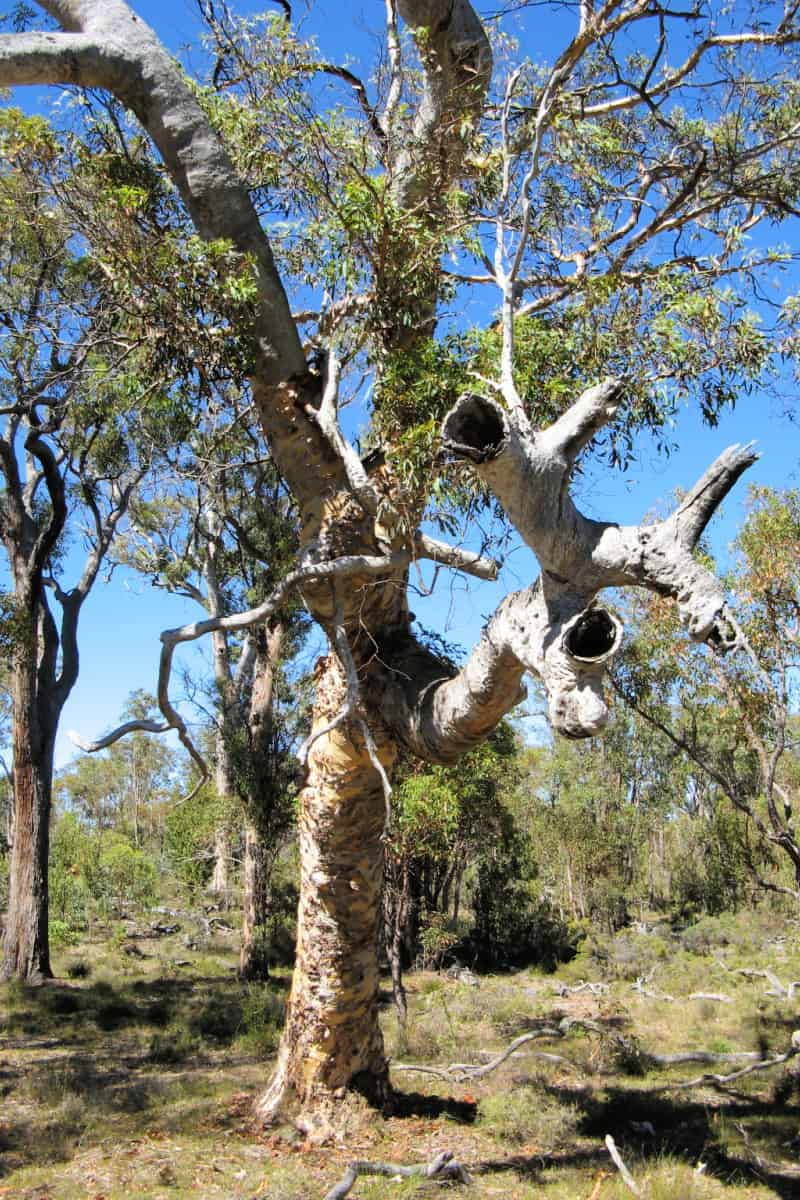
Wandoo with nesting hollows
Image: Jesse Brampton
The mature marri trees in this reserve provide an important food source for the cockatoos, and the big wandoo trees develop hollows for nesting sites.
It takes hundreds of years for wandoo trees to become large enough to create suitable hollows for birds and animals, making reserves like this, with mature trees, crucially important.
Local bird watcher Wayne Zadow has been monitoring birds at Myrtle Benn (and the broader Kojonup area) for decades. He has spotted 53 different species of bird just in this reserve.
Wayne Zadow
Kojonup Bird Watcher and Guide
“There’s quite a change over the Great Southern highway, which goes down through Katanning, Narrogin. The birds change. You get your splendid wrens here, but out there, you get your blue breasted wrens. Parrots too, they change. We’re in the middle and we get a crossover because birds do pass through. They go from those lakes to the coast and vice versa.”
“We do get some things that migrate from up north – they come down here to breed. Songlarks, bee-eaters, trillers and kingfishers. Early spring they come through and start getting active.”
Mammal life
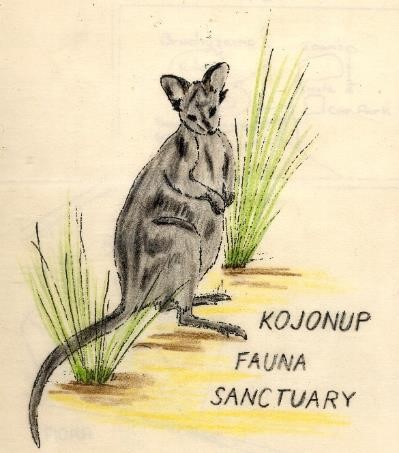
Myrtle Benn’s original typed brochure advised: “If you are quiet and still, you may see our brush tailed wallabies or grey kangaroos. Possums abound, as do gecko lizards, skinks and racehorse goannas.”
Other mammals spotted here include the Red-tailed Phascogale and Brush-tail Phascogale. Echidna tracks have also been seen.
The full range of mammals that once populated woodland areas in WA – including numbats, quenda, chuditch and bilby – are rarely seen in the area now. Their numbers in the WA Wheatbelt have been dramatically reduced by feral predators such as foxes and cats, and the broader loss of vegetation and habitat.
See & Do
Walks
The original typewritten brochure for the Sanctuary outlined nine trails through the woodland, two of which remain, the White Sisters Trail and the Bluebell Rock Walk, both well sign-posted.
The White Sisters Loop (620m) winds through open wandoo woodland (the white sisters) and a section along a laterite ridge and some interesting granite outcrops.
The Bluebell Rock Walk (975m) passes Bluebell Rock, where flowers of the same name (Australian bluebell, Billardiera heterophylla) can be found in early summer.
This was a favourite lunch spot for children working on the track. It also passes through sheoak woodland and open wandoo.

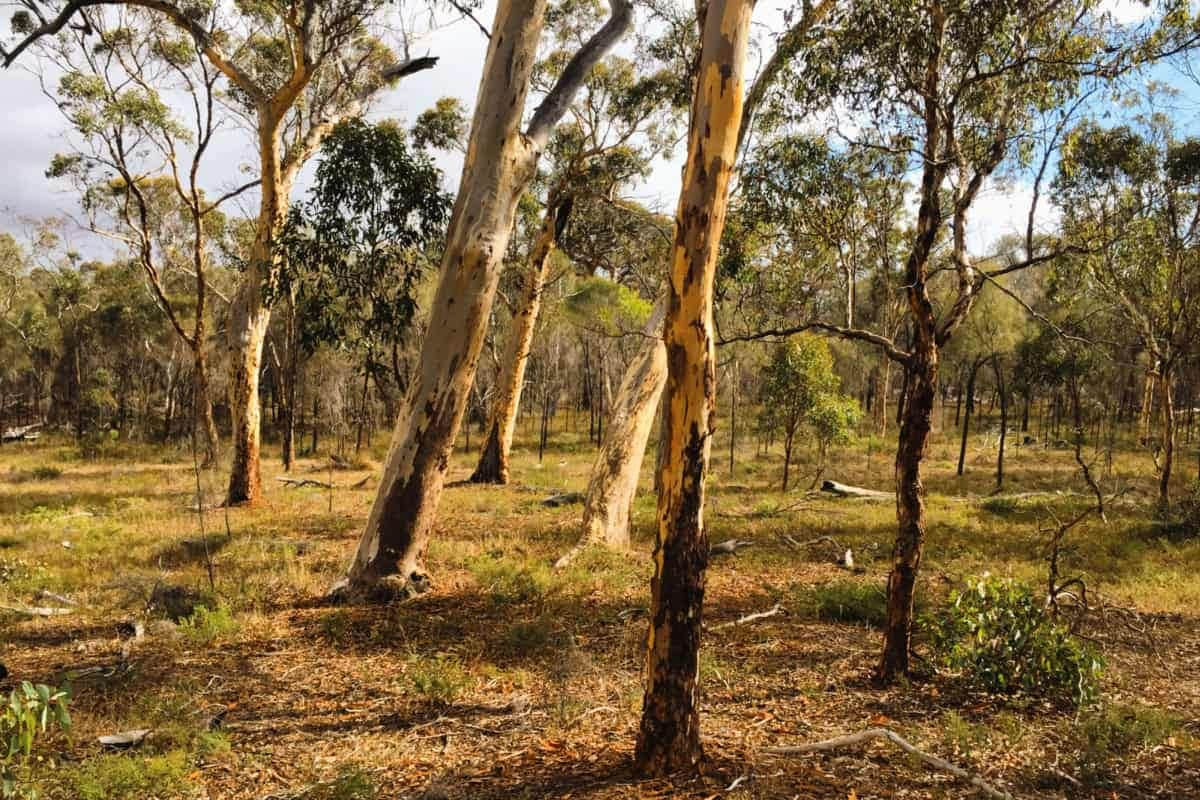
Wandoo woodland
Image: Margaret Robertson
Birdlife
Some of the interesting species spotted in this reserve include:
Other species you might see:
Download an illustrated list of all bird species found at Myrtle Benn:
Wildflowers and Orchids
While the spring flowering in this part of the world is spectacular, plants flower all year round in the Myrtle Benn Reserve.
In late summer there will be blossom in the canopy of the large marri trees.
In winter there will still be an orchid flowering – the Mosquito Orchid, as well various acacias (wattles), the purple Hovea and Parrot Bush.
In autumn you might see the Leafless, White Bunny and Hare Orchids.
But like most of southwestern Australia, it is during spring that the bush will come alive in a riot of colour. Look out for Catspaws, Everlastings and Lechenaultia, as well as the bush tucker plants – cummuk, noorjum, Grass Trees (Xanthorrhoea) and Quandong. These plants are all signposted on the walk trails.
The many orchids found in this reserve might be the star attractions.
See a full list of orchid species at Myrtle Benn Reserve:
Nearby
There are many other sites to visit nearby including:
Practical Information
Directions
Access is west from Albany Hwy at the north end of town, onto Robinson Rd, left into Soldier Rd, then right into Tunney Rd.
The entrance is approx. 1.2km from the highway on the right-hand side of road.
Facilities
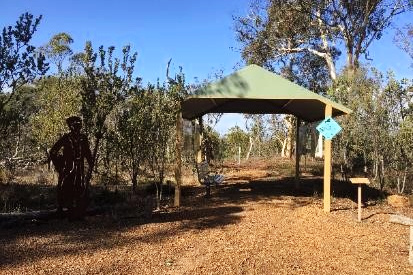
There are limited facilities here, with a shelter containing a bench and some interpretitive signage.
Closest towns
Kojonup is just 2km away, by gravel and bitumen roads
When to go
Djilba and Kambarang – from July to the end of November – is the best time to see the most flowers and orchids.
Where to eat and stay
See the suggestions from our friends at Great Southern Treasures:
Visitor Information

The Kodja Place & the Kojonup Visitor Centre
143 Albany Highway
(08) 9831 0500
The award-winning Kodja Place is an interactive visitor centre, right at the bottom of the hill, where the creek runs through Apex Park.
After just an hour here, you’ll have a new appreciation of the deep heritage of the Noongar people, and also the strength of will and self-reliance of the early pastoral families that opened up the land around this track that connected the water holes.


